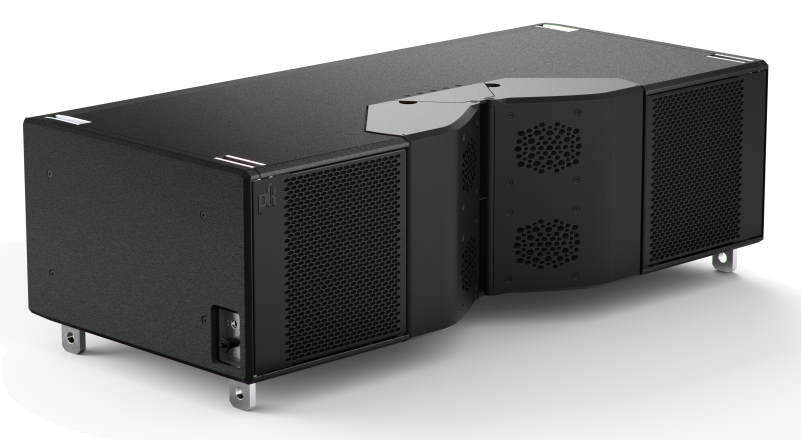PK SOUND Introduces Trinity Install Line Array Element

PK SOUND, the robotic line array company, has released an installation-focused iteration of Trinity, its flagship large-format line array element. Trinity Install brings the exceptional voicing and coverage control of the Trinity family to performance installations and live event spaces in discreet new all-black enclosures.
Trinity Install’s stunning SPL and clarity can be precisely controlled with variable coverage in both the vertical and horizontal planes. Intelligibility is dramatically improved by directing the system’s energy away from reflective surfaces as coverage is adjusted to meet the architectural design of the venue.
“Trinity Install delivers the impact and operational advantages of our flagship array family to high-performance installs in a fixed position, with our sleek, clean, and uncompromising new all-black design,” comments Darryl Ross, Senior Applications Support for PK SOUND. “The response from our network and clients so far has been very encouraging, as partners can now offer a solution for concert venues, theatres, nightclubs, houses of worship, and other live event spaces that want the full PK experience for their performers and patrons.”
The vertical angles are set during installation using a fixed rigging system, while horizontal angles are locked into one of 22 symmetric or asymmetric configurations throughout a line source. A combination of FIR and IIR filters are applied to ensure smooth frequency response in the listening area.
Horn-loaded 12” transducers manage low-frequency response. The mid-frequency band is supported by four 6.5” midrange transducers affixed to the patented Coherent Midrange Integrator (CMI). Two dual-diaphragm high-frequency transducers, coupled directly to an integrated planar waveguide, significantly reduce distortion across the high-frequency band. A 6,000 W Class D amplifier maximizes headroom while maintaining crystal clear audio and exceptional output.
The CMI waveguide seamlessly combines mid and high frequencies, working in tandem with precisely spaced low-frequency apertures for smooth and controlled directivity. It allows for variable adjustability from 60-120° both symmetrically and asymmetrically so that designers can vary the radial directivity of individual modules within the array to enhance overall system performance.
 How to resolve AdBlock issue?
How to resolve AdBlock issue?